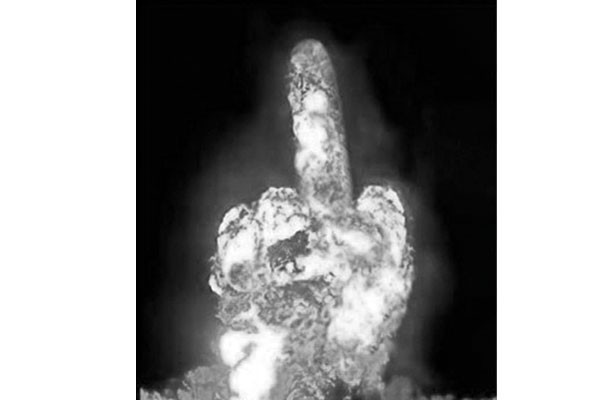On the September 9, North Korea conducted its biggest test of a nuclear weapon to date. The yield of the nuclear device is estimated at around 20 to 30 kilotons of TNT, more than ten times the size of the country’s first test in 2006, raising fears and prompting calls for fresh diplomacy with the totalitarian regime.
The test was perfectly timed, coming as world leaders talked shop in China for the G20 Summit and Laos for the East Asia Summit. However, experts have been wary of deducing the event to one of Kim Jong-un’s strategic temper tantrums. Instead, the nuclear test confirms much more: firstly, North Korea’s advanced weapons technology is becoming more refined and secondly, the international community needs a new approach to North Korea.
The test, coming days after the test launch of ballistic missiles, is causing alarm among some nuclear nonproliferation experts. Jeffrey Lewis, from the James Martin Center for Nonproliferation Studies, says that, Kim Jong-un’s political calculations aside, there is a real and worrying technical purpose. To paraphrase the scientific jargon, Lewis argues that North Korea has figured out how to get the most out of its small plutonium stockpile.
Lewis writes in Foreign Policy, “When Kim Jong Un posed with that bomb in March, he called it a ‘Korean-style structure of mixed charge … adequate for prompt thermonuclear reaction.’ Lewis believes North Korea could be using composite pits of plutonium and highly enriched uranium (mixed charge) to “boost” the yield of the explosion using a gas of hydrogen isotopes (prompt thermonuclear reaction). The warhead is designed to be reproduced in large quantities and fit compactly on a missile.
This latest nuclear test is a mockery of the international order, an order that has worked to varying degrees of success to curb the Kim dynasty’s nuclear ambitions over the last 25 years.
The infamous six-party talks, which brought the two Koreas, the US, China, Japan and Russia to the table in 2003, dragged on for four years and demanded endless toing and froing. The talks made little progress due to a variety of reasons, not all of them North Korea’s fault.
Other mechanisms of persuasion and coercion have had the same fate. Economic sanctions have been imposed on North Korea since 1992 and the brutal regime is still intact and its weapons capabilities have advanced. Burma, Cuba, Iraq, Iran, and Libya have all been under sanctions at one point or another, and what usually happens is that civilians suffer and dictators survive or even benefit. North Korea’s test has disrupted the US policy of isolating and ignoring the regime in the hope they’d just go away. Hillary Clinton called this “strategic patience.”
Some advocate for renewed engagement with the Kim Jong-un regime instead of continuing a dangerous patience. “Now would be a good time for a serious policy debate in the US over how to rethink a failing approach to North Korea,” John Delury, of South Korea’s Yonsei University, tweeted last week. Unfortunately, I don’t think a ‘serious policy debate’ is going to fly in the US during election season.
What makes reopening the diplomatic route to a nuclear-free Korean peninsula even more of a quixotic misadventure is the South Korean government’s hardline. Seoul was formerly at the forefront of pushing negotiations. That changed with President Lee Myung-bak in 2008, followed by Park Geun-hye in 2013. Park seems a bit softer than Lee but it’s hard to imagine her spearheading new talks.
Progress could find a friend in China, just about the only country in the world with something resembling ties with North Korea. The recent test might have China reconsidering its tolerance of its mischievous neighbour.
The ultimate obstacle is North Korea’s Kim regime itself. It is utterly paranoid about its own survival. Obtaining nuclear weapons is baked into its national identity. It is closed off and mysterious —leaving little room for the type of cross-border cultural flows that brought down the Iron Curtain. This latest nuclear test might spark a recommitment to smart policies to ease tensions and unite the peninsula. The current approach is not helping and the heavier approach, an approach of war with nuclear variables, would be an unforgivable sin.



